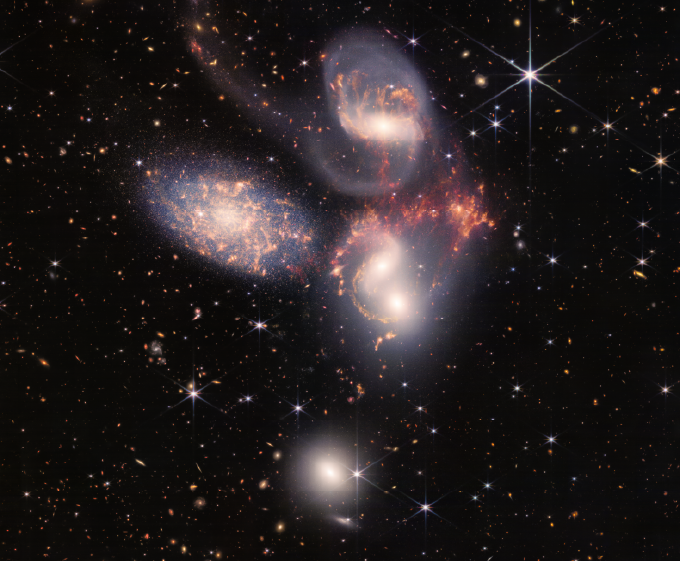Galaxies abound: James Webb Space Telescope creates bold new opportunities for UTSA astronomers
Chris Packham, professor and astrophysicist in the UTSA Department of Physics and Astronomy, was astounded at the sights of the newly revealed galactic images from the James Webb Space Telescope (JWST) Tuesday morning.
After watching the 25 years of development, Packham and others around the world found themselves experiencing history as NASA shared the JWST’s first five highly detailed images from space, unveiling the farthest corners of the cosmos.
Among the images is Stephan’s Quintet, a group of five galaxies interacting with each other in the company of old stars, evidenced by their red hue, and newly formed stars in blue. But the background of the photo was what brought Packham to his feet toward his 55-inch TV screen. There was no more blank sky—only galaxies.
“This is totally transformative,” Packham said. “We’ll have to change the way we ‘do’ science. This is a major moment for astronomy with the potential to transform, and when combined with improved techniques and approaches to harness the true power of the data, this is a game-changer! This will only get better from here on. The wealth of sensitive spatial information is incredible.”
“This is totally transformative. We’ll have to change the way we ‘do’ science.”

The JWST launched Christmas Day 2021 aboard a rocket in French Guinea. The telescope is the largest and most powerful space science telescope in (and out of) the world, efficiently producing images of space with the sharpest details. It took 12.5 hours for the JWST to produce the deepest ever infrared image (released July 12) of the furthest corners of space, considerably less time than its predecessor, the Hubble Deep Field, which took 10 consecutive days to capture an image created from exposures taken in 1995.
In the coming months, Packham will delve into these and other observations alongside a team of international scientists that is conducting research on supermassive black holes. The team, which Packham co-leads, is called Galactic Activity, Torus and Outflow Survey, or GATOS. By July 14, they will have access to the first part of their awarded data of galaxies that host supermassive black holes, as revealed by the JWST.
GATOS is one of a select number of teams awarded access to the Webb telescope for research. The team was granted a total of 53 hours on the telescope to collect data.
“This is only the beginning. It’s beyond what we had expected—it’s beyond our dreams,” Packham said.



